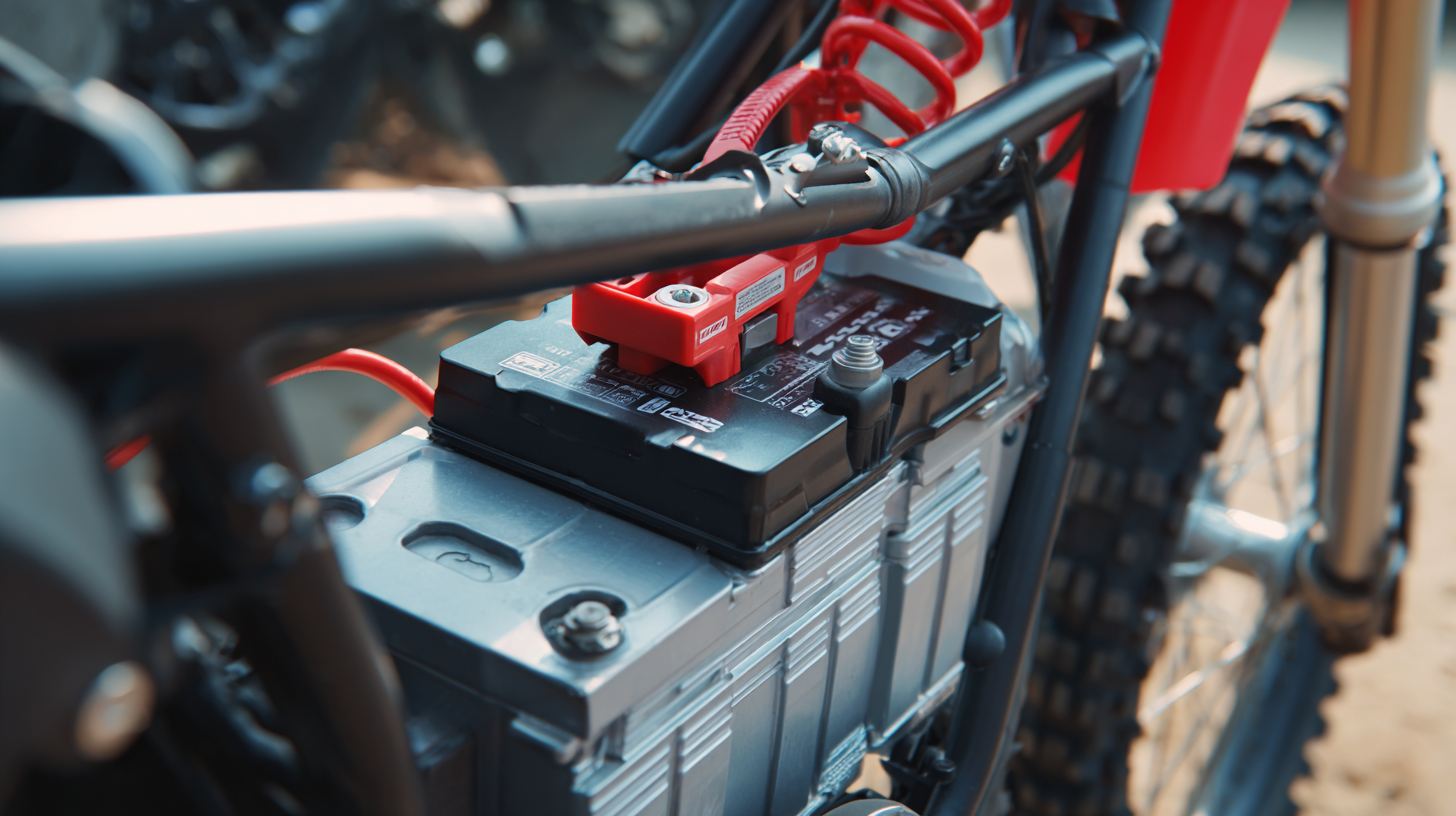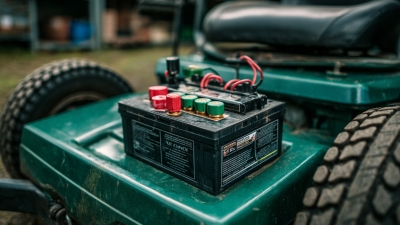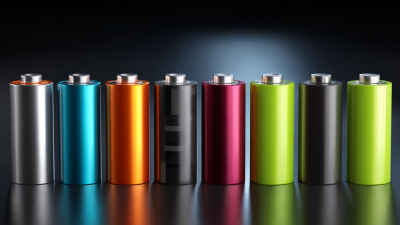What is a Powersports Battery and How to Choose the Right One for Your Vehicle
In the rapidly evolving world of powersports, selecting the right powersports battery is crucial for ensuring optimal performance and reliability of your vehicle. According to a recent report by Grand View Research, the global powersports battery market is projected to reach $2.5 billion by 2027, driven by a surge in recreational vehicle usage and advancements in battery technology. As the industry advances, knowing how to choose the right battery is vital for both safety and efficiency, making this knowledge invaluable to enthusiasts and professionals alike.
Industry expert Dr. James Thornton, a prominent figure in battery technology research, emphasizes, "Choosing the right powersports battery not only enhances the life of your vehicle but also contributes to safer and more enjoyable rides." With a variety of options available—from lead-acid to lithium-ion batteries—understanding the specifications and requirements of your specific powersports vehicle can make a significant difference. This guide aims to illuminate the essential factors to consider when selecting a powersports battery, ensuring that you make an informed decision that suits your vehicle's unique needs and enhances your overall experience on the road or trail.

Understanding Powersports Batteries and Their Importance for Your Vehicle
Understanding powersports batteries is crucial for ensuring the optimal performance of your vehicles, whether they are motorcycles, ATVs, or snowmobiles. These batteries are specially designed to withstand the harsh conditions and high demands of powersports applications. Unlike standard car batteries, powersports batteries are engineered for higher discharge rates, which is essential for quick starts and reliable performance.
When choosing the right powersports battery for your vehicle, consider factors such as the battery type, size, and capacity. Lithium batteries, for example, are gaining popularity due to their lightweight nature and high energy density. In contrast, lead-acid batteries are more traditional but can be heavier and less efficient. Evaluate the specific requirements of your vehicle and the conditions it will be used in.
**Tips:**
- Always check the manufacturer’s specifications for compatibility with your vehicle.
- Consider investing in a quality battery charger tailored for powersports batteries to prolong their lifespan.
- Regularly inspect your battery for signs of corrosion or damage, as these can affect performance.

Key Factors to Consider When Choosing a Powersports Battery
When selecting a powersports battery, there are several key factors to consider that can significantly impact the performance of your vehicle. Firstly, it’s essential to understand the type of battery required for your specific powersport vehicle, whether it’s a motorcycle, ATV, or jet ski. Different vehicles may have unique power demands and electrical systems, leading to the need for either a lead-acid or lithium-ion battery. Understanding these requirements ensures compatibility and optimal performance.
Another crucial factor is the battery's cold cranking amps (CCA), which measures the battery's ability to start an engine in cold temperatures. For regions with harsh winters, a battery with a higher CCA rating will provide reliable starts. Additionally, consider the battery’s reserve capacity—this indicates how long the battery can run essential accessories without the engine running. Selecting a battery with a suitable reserve capacity ensures that you can enjoy all the bells and whistles of your vehicle without the fear of being stranded. Lastly, always check for warranties and manufacturer recommendations, as these can also guide you in making an informed decision.
What is a Powersports Battery and How to Choose the Right One for Your Vehicle - Key Factors to Consider When Choosing a Powersports Battery
| Battery Type | Voltage | Capacity (Ah) | Weight (lbs) | Cold Cranking Amps (CCA) | Life Cycle (Years) | Price Range ($) |
|---|---|---|---|---|---|---|
| Lead Acid | 12V | 30 | 12 | 200 | 2-4 | 50-100 |
| AGM (Absorbent Glass Mat) | 12V | 40 | 15 | 250 | 3-5 | 80-150 |
| Lithium Ion | 12V | 20 | 6 | 300 | 5-10 | 200-400 |
| Sealed Lead Acid | 12V | 32 | 10 | 180 | 3-5 | 60-120 |
Top 5 Powersports Batteries for 2025: Features and Benefits
When selecting the right powersports battery for your vehicle in 2025, it's essential to consider the top options available on the market. The first standout choice is the Yuasa YTX20HL-BS, renowned for its robust performance and long lifespan. With its advanced absorbed glass mat (AGM) technology, it provides excellent vibration resistance and can deliver consistent power in extreme weather conditions, making it ideal for various powersports applications.
Another great option is the Odyssey PC680, known for its deep cycling capabilities. This battery is particularly beneficial for riders who require reliable starting power and extended service life. It features a rugged construction that can withstand harsh environments, and its unique design ensures quick recharge times. Additionally, the Shorai LFX14A4-BS12 lithium battery is gaining popularity for its lightweight structure and high cranking power, offering an impressive power-to-weight ratio for performance enthusiasts. Each of these batteries brings unique features and benefits suited to different types of riders, ensuring that you can find the perfect fit for your powersport vehicle.
Maintenance Tips to Extend the Life of Your Powersports Battery
Powersports batteries are pivotal for ensuring that vehicles like motorcycles, ATVs, and UTVs operate efficiently. To maximize the longevity of these batteries, regular maintenance is crucial. For instance, routine checks on terminal connections can prevent corrosion, which impacts battery performance. Research indicates that properly maintained batteries can last up to 50% longer than those that are neglected. Battery fluid levels should also be monitored; ensuring the electrolyte level is adequate prevents damage and leaks.

Charging practices play a significant role in extending the life of a powersports battery. Using the correct charger and following manufacturer guidelines can significantly reduce the risk of overcharging, which is a common cause of battery failure. Charging your battery fully and keeping it in a temperate environment can provide a substantial boost in lifespan. Additionally, it's wise to keep a maintenance charger on hand, as it can prevent the battery from fully discharging during long periods of inactivity, further ensuring it remains in top condition and ready for use.
Common Myths About Powersports Batteries Debunked
Powersports batteries often fall victim to several common misconceptions that can lead to poor performance and reduced lifespan. One prevalent myth is that all batteries are created equal. Many users believe that any standard lead-acid battery will suffice for their powersports vehicle, but this is far from the truth. Powersports batteries are specifically designed to meet the unique demands of vehicles like motorcycles, ATVs, and personal watercraft, requiring different specifications for power output, size, and durability to withstand harsh environments.
Another widespread myth is that maintenance-free batteries don’t require any attention. While maintenance-free batteries might not need regular fluid checks like traditional lead-acid batteries, they still require proper charging practices and care. Neglecting charging cycles or exposing them to extreme temperatures can significantly diminish their lifespan. Understanding these misconceptions is crucial for power sports enthusiasts who want to maximize their vehicle's performance and reliability. By debunking these myths, riders can make informed decisions about selecting and maintaining the right battery for their needs.
Power Sports Battery Capacity Comparison
Related Posts
-

Essential Guide to Choosing the Right Lawn Tractor Battery for Optimal Performance
-

What are the Key Features of Lawn Mower Batteries You Should Know?
-

Top 10 Benefits of Using Rechargeable Batteries for Sustainable Power Solutions
-

Understanding the Benefits of Lawn Battery Technology for Sustainable Gardening Practices
-

Unveiling Battery Acid Innovations at the 2025 China Import and Export Fair
-

Batteries Delivered Revolutionizing Supply Chains at the 138th China Import and Export Fair 2025
